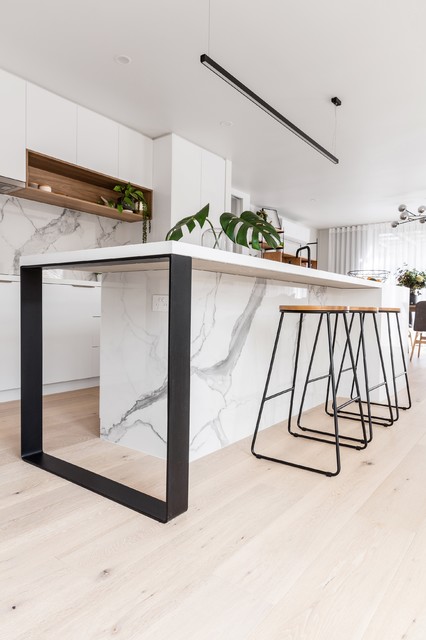Change Your Area with Cutting-edge Kitchen Island Leg Layouts
Change Your Area with Cutting-edge Kitchen Island Leg Layouts
Blog Article
The Relevance of a Sturdy Kitchen Island Leg in Developing a Functional Cooking Area
A strong kitchen island leg offers as a fundamental part in establishing a practical cooking environment, providing essential assistance for both the kitchen counter and numerous cooking area tasks. As cooking areas evolve into multifunctional areas for cooking, eating, and mingling, the choice of materials and layout considerations for island legs ends up being progressively important.
Advantages of Sturdy Island Legs
Supplying necessary support, tough kitchen area island legs play a critical function in enhancing the functionality and sturdiness of kitchen islands - kitchen island leg. These legs not just bear the weight of the countertop and any additional things put on the island, yet additionally add to the overall stability of the structure. A well-supported cooking area island guarantees that it continues to be functional and upright, even under hefty use, which is specifically essential in active kitchen atmospheres
Moreover, strong island legs can enhance the aesthetic allure of the kitchen. They supply a solid framework that can enhance different style styles, from contemporary to traditional. This flexibility allows house owners to customize their cooking area islands according to personal preference while making sure that the architectural honesty remains uncompromised.
Along with their encouraging role, robust kitchen area island legs can additionally enhance safety. A secure island reduces the danger of mishaps brought on by tipping or tottering, which is especially critical in households with children or elderly individuals. Additionally, solid legs can facilitate a seamless flow of activities, permitting effective dish prep work and social communications within the kitchen space. Ultimately, buying sturdy kitchen area island legs is essential for a useful and visually pleasing cooking area.
Materials for Kitchen Area Island Legs
When picking materials for kitchen island legs, sturdiness and visual allure are vital variables to consider. One of the most common products include wood, metal, and engineered timber, each offering unique advantages.
Hardwood, such as cherry, maple, or oak, is a classic selection due to its toughness and ageless charm (kitchen island leg). It can hold up against considerable weight and is resistant to use, making it excellent for high-use cooking area atmospheres. Additionally, wood can be tarnished or painted to complement various kitchen area styles
Metal legs, often crafted from stainless-steel or functioned iron, supply a modern and commercial look. They are unbelievably solid and can support significant tons while being resistant to dampness and warmth, which is useful in a cooking area. Steel legs can also be quickly cleaned, improving their practicality.

Layout Considerations for Stability
The option of materials for cooking area island legs directly influences the design factors to consider for security. When developing a kitchen island, it is paramount to review the weight-bearing ability of the selected products. Heavier materials, such as solid wood or metal, normally offer greater stability, particularly under the tension of day-to-day use.
In addition, the leg design need to integrate proper geometry to enhance security. A larger base enhances the assistance location, lessening the threat of tipping or wobbling. Factor to consider ought to additionally be offered to the height of the legs; out of proportion leg lengths can cause inequality, compromising the total security of the island.
In addition, the distribution of weight throughout the island is important. Guaranteeing that the leg placement straightens with the heaviest elements, such as counter tops and appliances, web link will certainly further improve security.
Upkeep Tips for Longevity

Cleaning is another critical facet of maintenance. Depending upon the material of the legs-- whether timber, steel, or composite-- appropriate cleansing techniques ought to be employed. For wood legs, a gentle clean with a wet cloth and an ideal wood cleaner will certainly help protect their finish. Metal legs might call for a light gloss to avoid corrosion and keep their radiance.
Furthermore, tightening up screws and screws regularly can guarantee stability and avoid tottering. If the cooking area island experiences hefty usage, consider strengthening the legs with extra braces or sustains to enhance toughness. Last but not least, applying a safety finish or sealant can secure versus dampness and stains, extending the life-span of the legs. By complying with these maintenance suggestions, home owners can ensure their cooking area island legs continue to be durable and functional for several years ahead.
Selecting the Right Leg Design
Routine upkeep ensures that kitchen island legs continue to be durable and practical, yet selecting the ideal leg design is similarly crucial for both aesthetic appeals and assistance. The option of leg style can substantially influence the general design and harmony of your kitchen.

Capability is another essential facet. Thicker legs or those with a sturdy base can sustain much heavier countertops and tools, boosting the island's utility. Conversely, slim legs might develop an airy appearance, suitable for lighter designs but possibly less helpful.
Verdict
In summary, the value of tough cooking area island legs can not be overemphasized in the production of a useful food preparation weblink location. These legs offer necessary assistance, improve security, and contribute to the total aesthetic of the kitchen.
A sturdy cooking area island leg offers as an essential element in developing a functional food preparation environment, supplying essential assistance for both the kitchen counter and different cooking area activities.Offering crucial support, durable kitchen island legs play an essential duty in boosting the performance and resilience of kitchen islands. Eventually, investing in sturdy cooking area island legs is essential for a practical and visually pleasing cooking area.
Consideration should also be given to the height of the legs; out of proportion leg sizes can lead to imbalance, compromising the total stability of the island.
Wood legs provide heat and top article a timeless appearance, while metal legs supply a industrial and modern feel.
Report this page